Table of contents
Message from the Minister of Rural Economic Development
As Canada’s first Minister of Rural Economic Development, I am pleased to present the Government of Canada’s Rural Economic Development Strategy.
This Strategy is the result of several months of touring Canada and meeting with rural Canadians in communities like The Pas, Manitoba; Clarenville, Newfoundland; Low, Quebec; and Yellowknife, Northwest Territories, and picks up on the work our government has been doing since day one. Rural priorities are the government’s priorities.
Since my appointment by the Prime Minister, I have toured Canada and seen first-hand how rural communities are reinventing themselves to adapt to a changing world.
The rural Canadians I met were clear in what their communities need to prosper and thrive. Their stories and ideas have both inspired and informed this Strategy.
We heard from residents and rural leaders, who spoke of skills shortages, the pressures of global competition, and the impacts on a community’s health and sustainability from insufficient and unaffordable housing.
Parents spoke of their children moving away to be closer to higher education and reliable high-speed Internet. They also spoke of their own parents moving away in search of more affordable residential communities with reliable health care services.
Almost 20 percent of our population lives in rural, remote, Indigenous, coastal, or northern communities, and these communities contribute about 30 percent of Canada’s economic output. For these communities, diverse geographies and climates present unique challenges, and there is no one-size-fits-all solution.
That is why this Strategy was developed with ideas from rural Canadians across the country. It is not a top-down solution, but a roadmap for growth based on rural input, which complements our government’s ongoing support for growing the middle class, advancing reconciliation with Indigenous peoples, and supporting diversity across the country.
We will make progress by working together in partnership – with rural leaders, Indigenous organizations, official language minority communities, municipalities, provinces, and territories. This is how we make a difference for rural Canada: by combining our efforts and focusing on what matters.
Together, we have already achieved real outcomes for rural Canadians through our government’s Investing in Canada infrastructure plan. We are also pleased to be working closely with the Federation of Canadian Municipalities on important initiatives like the Municipal Asset Management Program. We will make significant investments directly in communities with Budget 2019’s one-time top-up of $2.2 billion through the federal Gas Tax Fund to address short-term priorities in municipalities and First Nations communities.
This Strategy will build on our successes by maximizing our investments to accelerate progress, creating jobs, and driving economic growth so that all Canadians living in rural and remote communities have equal opportunity to participate fully in our nation’s economy and share in its prosperity.
That is why it is my great privilege to present Canada’s Rural Economic Development Strategy.

The Honourable Bernadette Jordan
Canada’s first Minister of Rural Economic Development
Why Rural Economic Development is a priority
Rural communities are key to Canada’s economy, culture, and social fabric. They work with urban centres to make our country the successful, prosperous place that it is.
Rural communities are an integral part of the Canadian economy, contributing to the tourism, high-tech, and manufacturing sectors. They are on the front lines of Canada’s resource economy.

Rural Canadians work in agriculture, mining, oil and gas, forestry, fisheries, and aquaculture. These sectors have long been Canadian centres of expertise, and now represent some of the most technologically advanced industries in the country, using artificial intelligence, precision farming systems, drones, biosciences, and other cutting edge technologies.
We cannot have a prosperous country without successful, competitive, and thriving rural communities.
However, rural Canada, like the rest of the country, is facing its own unique challenges. Canada is undergoing rapid changes, which are having a direct impact on rural communities. Transformative new technologies are creating enormous opportunities for rural Canada, while at the same time threatening to disrupt communities and their workers.
Climate change is also having a direct impact on the resources that some communities harvest, and the ways in which they harvest them.
These changes will affect employment, training, migration, housing needs, and more in rural communities, which is why it is essential to prepare for these changes. To position rural Canada for continued success in the future, it is important to recognize that not all rural communities are the same.
Many rural communities have told us that it is often one significant change that can help unlock potential. For example, the Inuvik-Tuktoyaktuk Highway in the Northwest Territories addressed many of these issues for the community of Tuktoyaktuk, which is benefiting from new tourism opportunities and reduced transportation costs for goods and services.

Our intent is to support rural communities as they develop and invest in the tools and solutions that unlock opportunities for their residents.
Through the Rural Economic Development Strategy, the Government of Canada supports strong and resilient rural communities as an integral part of the Canadian economy.
Canada’s first-ever Minister of Rural Economic Development
On January 14, 2019, Prime Minister Trudeau appointed the Honourable Bernadette Jordan as Canada’s first Minister of Rural Economic Development.
“Rural municipalities must be full partners in plotting the path forward. This work must happen in collaboration with all orders of government.”
Federation of Canadian Municipalities
Rural Challenges: National Opportunity report
The Minister provides rural Canadians with a dedicated voice at the Cabinet table, representing rural perspectives and championing economic opportunity and quality of life in rural Canada. Minister Jordan is also leading the roll-out of broadband and infrastructure investments in rural Canada. The Minister is supported by a dedicated team of officials at the Centre for Rural Economic Development at Infrastructure Canada, who will work closely with Canada’s regional development agencies and many other federal government departments to help rural communities better understand and navigate our programs and services.

Most importantly, the Minister’s role is to support rural Canadians as a partner in the implementation of the programs and policies affecting their communities. This includes providing a central point for rural Canadians to share ideas and concerns. Minister Jordan’s mandate complements that of many other ministers across the federal government, which supports a whole of government approach to strengthening the design and delivery of Government of Canada initiatives so that they are more accessible and attuned to the needs of rural Canada.
The state of Rural Canada and its defining challenges
One fifth of all Canadians live, work, and thrive in rural communities, which are as diverse as Canada itself.
Some are remote and only accessible by airplane, while others are closer to urban centres. Many fall somewhere in between. Some are coastal, while others are agricultural, and rich in natural resources. Some are northern, others are official language minority communities, and many are Indigenous. Finally, a rural community could have one or all of these features, because every rural community is completely unique.
Some regions have more rural communities than others. For example, nearly 50 percent of Atlantic Canadians live in rural areas, whereas fewer than 10 percent of British Columbians do. Rural communities tend to have stronger Indigenous representation, fewer recent immigrants, and a slightly older population compared to urban Canada.

Economically, rural communities play a big role in Canada’s prosperity, contributing nearly 30 percent of the country’s total gross domestic product (GDP). However, rural communities also face unique economic challenges: rural incomes tend to lag behind those of urban communities, and unemployment levels tend to be higher. Education levels also drop the further a community is from an urban centre.
Taken as a whole, the rural economy is as sophisticated and diverse as most of urban Canada’s.
An Economic Development Strategy for rural Canada
The Rural Economic Development Strategy was designed to address the priorities of rural Canada. This grassroots Strategy was built on ideas submitted by rural Canadians from across the country.
Minister Jordan and Parliamentary Secretary Marc Serré toured the country and met with hundreds of rural Canadians to hear first-hand about their local needs. They spoke with people living and working in rural communities – like forestry workers, entrepreneurs, and farmers – as well as community leaders, associations, businesses, academics, municipalities, Indigenous groups, and provincial and territorial ministers.
Canadians were also invited to submit their ideas directly to the new Centre for Rural Economic Development at Infrastructure Canada.
What rural Canadians told us
We heard that rural Canada is facing rapid and unprecedented changes, but more importantly, it has a solid foundation for building a prosperous future.
While every community’s ideas were different and specific to their needs, common themes and challenges emerged:
- The need for reliable and affordable high-speed Internet and mobile connectivity;
- A desire to maintain vibrant local economies;
- The need to attract and retain talent (including through skills development and immigration);
- The need for affordable and attainable housing;
- The need for new or improved infrastructure where people live and work that is resilient to climate change;
- A need for community capacity to plan and implement improvements and change.
Often these challenges are connected, and communities emphasized that while resources are available, government programs and services are often complex to navigate or not well-aligned with rural realities.
Above all, rural Canadians emphasized that they are adaptable, but need the Government of Canada to engage with them, make resources and opportunities available, and ensure government policies and programs meet their unique needs.
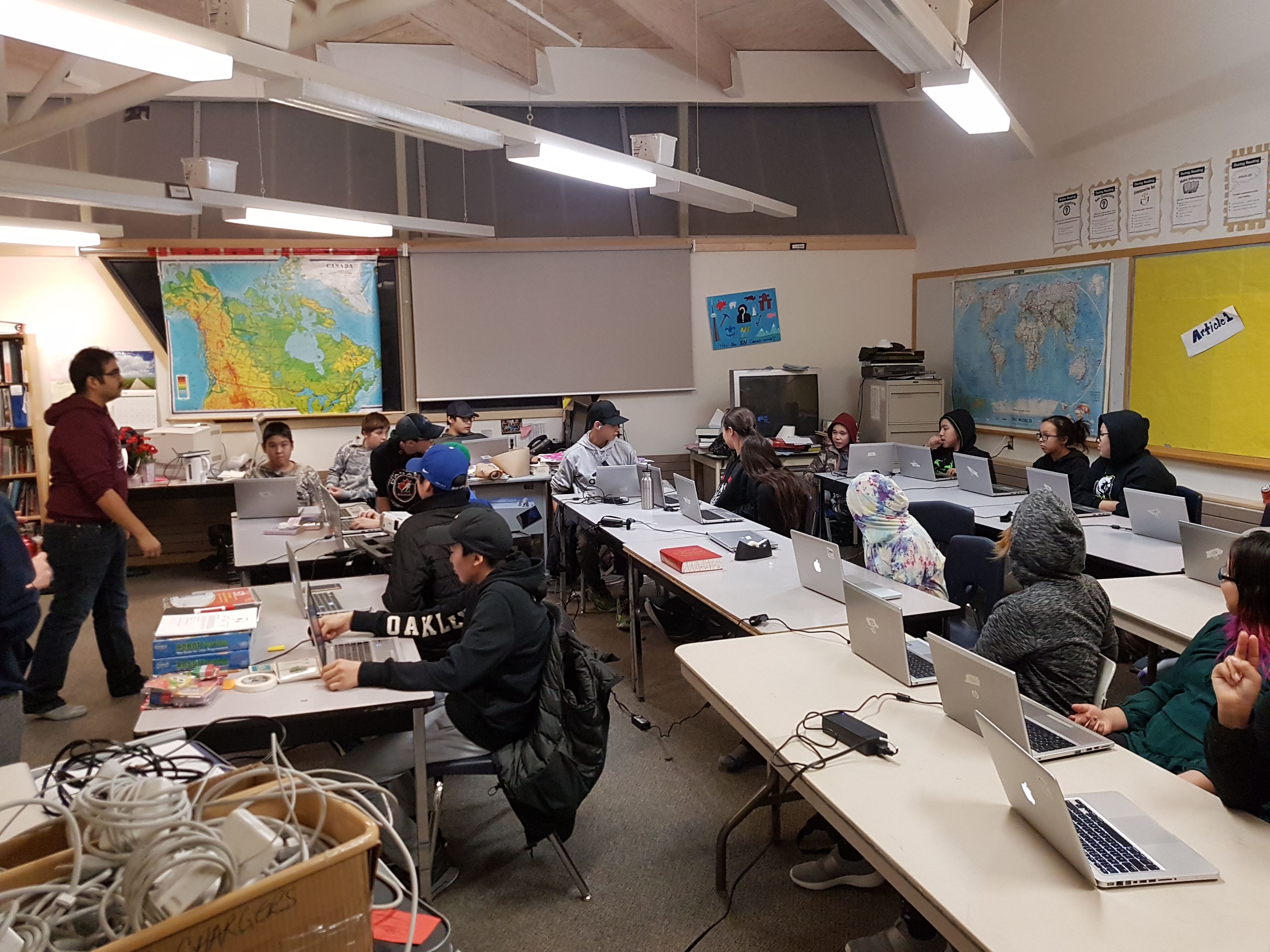
Community, connectivity, and digital access for Indigenous communities
A group made up of Nunavut’s 25 communities was the winner of a $10 million prize from Canada’s first-ever Smart Cities Challenge. This group of 25 Nunavut Communities is working together to strengthen resilience and improve mental health among young Nunavummiut. They are creating a network of permanent Makerspaces within each of their communities. These Makerspaces will be safe and nurturing social hubs for youth, providing digital and STEAM-based learning activities that align with Inuit Qaujimajatuqangit principles such as collaboration, creative problem-solving and knowledge-sharing.
The objectives of the Rural Economic Development Strategy
In the short term, the Government of Canada will work closely with rural communities to build on existing investments and identify improvements that can be made to programs, policies, and future investments to benefit rural communities. A continued focus on rural perspectives will identify how federal investments can work better to benefit rural communities and help improve access and reduce barriers to emerging opportunities.
In the longer term, the Government of Canada will move forward with an unwavering commitment to strong and resilient rural communities and make strategic investments in the priorities that rural communities identify as key to their economic development and success.
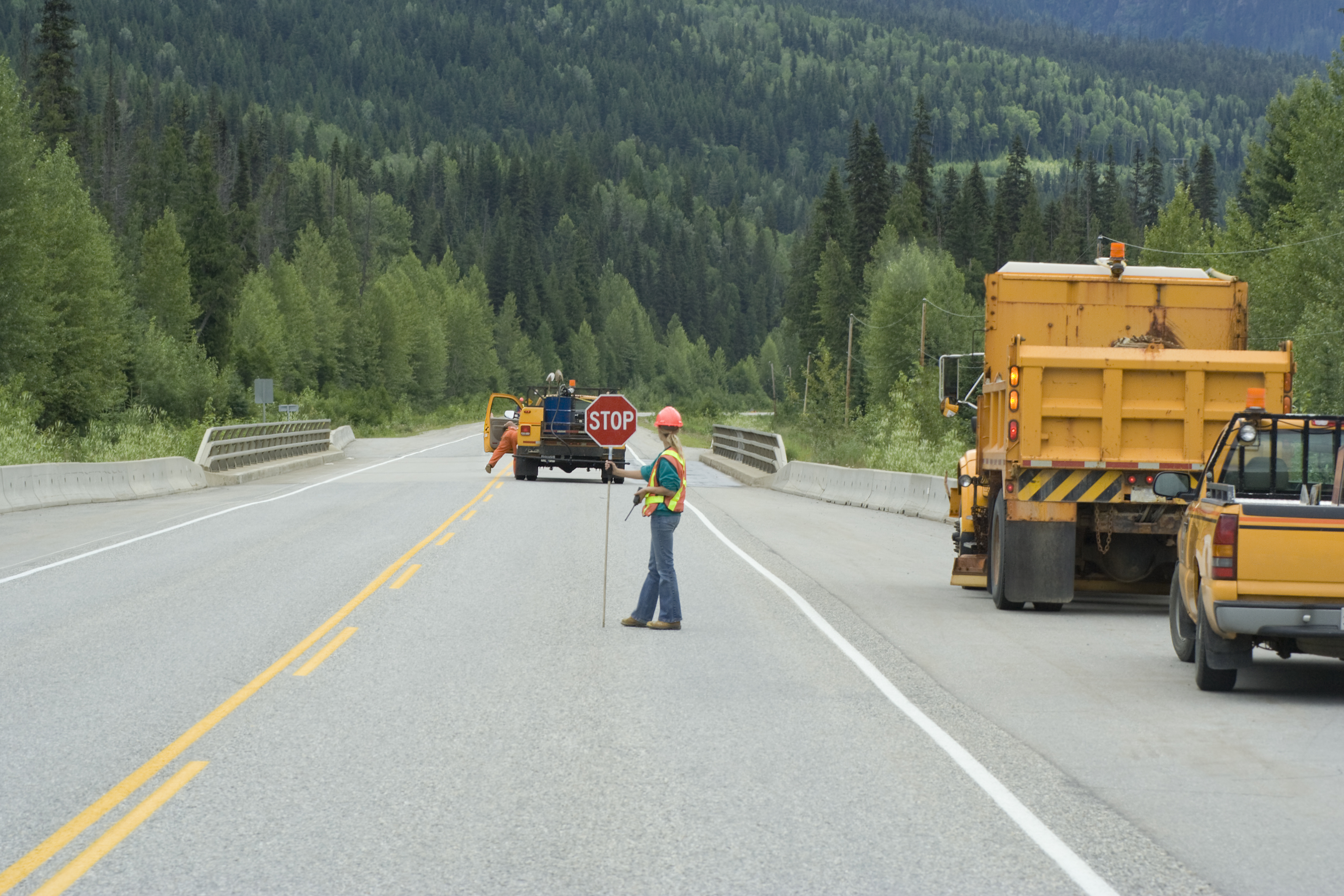
Places: Building rural communities
Overall, rural Canadians want to see their communities grow, succeed, and thrive. They want their infrastructure to be modern, safe, and sustainable; they want to work at jobs they love that help them provide for their families; they want to be able to move around their communities safely and easily; and they want to protect their homes and families from floods, wildfires, and other extreme weather events.
Extending high-speed internet and wireless connectivity to every Canadian
Access to reliable, high-speed Internet is essential for success. It’s needed for business growth, skills training, public safety, access to services, and participation in the democratic process.
Rural and remote communities are particularly hard to connect, given their low population density, remoteness, and often challenging terrain. As a result, as of 2018, 4.9 million Canadians lacked access to the Government’s target speeds of 50 megabits per second download (Mbps) and 10 Mbps upload (“50/10”). In fact, only 37 percent of rural households are currently able to access these speeds, compared to 97 percent of households in urban areas.
Cellular coverage is also an issue. As of 2017, 14 percent of major Canadian roads and highways still lacked mobile wireless coverage. This gap in coverage poses safety concerns for motorists and travellers in need of emergency services.

Next generation high-throughput satellite broadband expansion for Nunavut
This project will build the backbone satellite network needed to make higher-speed Internet available in every community across Nunavut. Residents in all 25 Nunavut communities will be able to do business online, participate in distance education, search for jobs online, and stay connected to family and friends.
What we heard
Time and again, rural Canadians have identified unreliable and slow Internet connectivity as their number one challenge. We heard about kids doing their homework at local coffee shops so they could access Wi-Fi; businesses having to rely on cash or cheques because they can’t rely on Interac machines; and people avoiding using the Internet at peak times, because of how slow it can become.
Rural Canadians say that if a community has poor connectivity, it is difficult to retain youth, attract talent, grow businesses, train workers, and adopt new technologies. There is an overwhelming consensus that broadband access is essential to success, and that it should be available regardless of where someone lives.
What we’re doing
The Government of Canada is committed to achieving universal broadband coverage and addressing the gaps that predominately exist in rural and northern areas.
Through the $500-million Connect to Innovate program, the government is extending high-speed Internet access to more than 900 rural and remote communities, and 380,000 households. That includes 190 Indigenous communities across Canada.

Since the launch of the program in 2016, more than $450 million in funding has been announced for over 170 projects.
In Budget 2019, the government announced $1.7 billion in new funding to establish a Universal Broadband Fund, which will be designed specifically to meet the connectivity needs of rural Canadians; secure Low Earth Orbit satellite capacity; and top up the Connect to Innovate program.
These actions complement the Canadian Radio-television and Telecommunications Commission‘s $750- million Broadband Fund, which will invest in expanding broadband and mobile wireless services across the country; the Canada Infrastructure Bank, which will seek to invest $1 billion and leverage at least $2 billion in additional private sector investment over the next ten years; and the Accelerated Investment Incentive, which will encourage greater investments in rural high-speed Internet and cell coverage from the private sector.
As an immediate action, the centrepiece of these efforts will be Canada’s first Connectivity Strategy.
The Strategy commits to universal 50/10 Internet speeds for all rural, remote households, and Indigenous communities, and to strengthening cell coverage where Canadians live and work, as well as along major roads and highways.
The Strategy aims to better align efforts to expand broadband and mobile access, and includes creating an expanded centre of expertise at Innovation, Science and Economic Development Canada to improve coordination. The Government will also continue to look at ways to improve cell coverage across the country as an important tool for communication and public safety.
A Connectivity Strategy for Canada
The Government is launching Canada’s Connectivity Strategy. The Strategy is a historic commitment to connect every Canadian household to high-speed Internet (50/10), and to improve cellular access where Canadians live and work, including along major roads and highways.
Central to this Strategy, and announced in Budget 2019, is the Government’s commitment to provide up to $1.7 billion over 13 years in new support for high-speed connectivity in rural and remote communities. This includes the new Universal Broadband Fund, which will support fibre optics and other technologies, including securing cutting-edge Low Earth Orbit (LEO) satellite capacity to connect Canada’s hardest-to-reach communities.
The Universal Broadband Fund will be specifically designed around the needs of rural, remote, and Indigenous communities. The Government will engage with Canadians on the design of the Fund in 2019, giving rural stakeholders, municipalities, Internet-service providers of all sizes, and Indigenous communities the chance to provide ideas and feedback on their priorities.
Under the Strategy, the Government will also:
- Launch an online broadband portal to bring together the multiple funding sources offered by federal departments and agencies. This will ensure rural municipalities know exactly what broadband funding is available, and how to access it.
- Work to reduce administrative burden by coordinating application requirements across connectivity programs. This will help rural municipalities, many of which only have one administrator working for them, better navigate the application process.
- Improve publicly-available mapping and data on broadband coverage, so that rural municipalities can see in greater detail where the gaps are in their community’s coverage. This will help them design better, more effective broadband projects.
- Work with stakeholders to promote efficient access to “passive infrastructure” – the poles, towers, and underground ducts that are critical to building fibre optic cable and 5G cellular networks.
- Make additional wireless spectrum available to meet Canadians’ growing demand for wireless connectivity, and to prepare Canada for the transformative technology of 5G wireless networks.
- Develop smaller licensing tiers for wireless spectrum, giving rural communities more dedicated licensing separate from major cities. This will allow smaller, rural-focused Internet service providers to focus their services on rural clients.
Overall, Canada’s Connectivity Strategy will better align resources and provide a tool to coordinate efforts to ensure that all Canadians – no matter where they live – have access to affordable, reliable, high-speed Internet.
Strengthening rural economies to create jobs and opportunities for Canadians
Canada’s rich natural resources and abundant agriculture have a long history as the foundation of the Canadian economy, particularly in rural areas. Overall, rural Canada contributes 30 percent of the country’s GDP. Mining, forestry, agriculture, fisheries, energy resource extraction, and electricity production are the key contributors. These industries also support value-added manufacturing, transportation, and tourism, and are increasingly investing in innovation and clean technologies.

Profile in food supply and reducing waste: Guelph & Wellington County, Ontario
One of the Smart Cities Challenge winners, Our Food Future, is an initiative to create Canada’s first food smart community. Through the use of information technology and partnerships, the region is working towards three goals:
- Increase access to affordable, nutritious food by 50 percent.
- Create 50 new circular food businesses and collaborative opportunities.
- Increase economic revenue by 50 percent by reducing or transforming food waste.
These efforts will optimize local food production, create synergies between local enterprises, and benefit local residents and visitors alike.
Tourism is a high-growth, high-potential sector. Rural enterprises have built-in advantages based on their locations and natural attributes, and there is a growing interest in developing new opportunities in eco-tourism, food-based tourism, and authentic Indigenous experiences.
Canada’s co-operative model
Co-operatives are a valuable way for Canadians to share ownership in a business, while delivering goods and services to their communities. With approximately 8,000 co-operatives across the country, Canada is home to one of the most innovative and growth-oriented co-operative sectors in the world, employing over 101,000 Canadians across all sectors of the economy including housing, agriculture, retail, health care and social services, manufacturing, high-speed broadband, and clean energy.
Often co-operatives are local solutions. In the 1930s, eight local farmers pooled their resources to build a petroleum refinery because they couldn’t afford the high prices for fuel being charged elsewhere. Today, the Co-Op Refinery Complex is one of the largest in the country, employing more than 1,000 people and supporting a range of agricultural and other businesses across Western Canada.
In 2018, Canada committed $8.9 million in direct support to 46 Canadian co-operatives to access federal programs and services; raise awareness about the co-operative business model; and modernize co-operative sector data.
What we heard
Rural Canadians have bright ideas for their future. They want to work in partnership and diversify their regional economies, build on local resources and attributes, evolve their business models, and combine old with new in ways that make sense for the community.
Rural Canadians say that if a community is going to successfully take full advantage of opportunities, its strengths and attributes must be considered. These strengths and attributes can include proximity to natural resources and availability of transportation, skilled workers, and other supporting infrastructure.

Some municipalities were clear that the interest and capacity existed within their communities, but an absence of broadband and the right investments at the right time were holding them back, particularly in shifting to the digital economy or adopting more efficient connected technology.
What we’re doing
The Regional Economic Growth Through Innovation program provides funding and tailored support in communities across Canada to help create the right environment to start and grow businesses, and create strong and dynamic local economies. Actions such as the Community Futures Program, which funds local community development offices, and the Strategic Partnerships Initiative are helping communities adapt to take advantage of emerging opportunities.
Support is also available for specific sectors through funds and initiatives such as Canada’s fisheries funds, the Indigenous Forestry Initiative, the Destination Employment Program, and the Canada Coal Transition Initiative.
While these programs are preparing rural enterprises for the economy of the future, Global Affairs Canada‘s Trade Commissioner Service is working with small- and medium-sized enterprises, including those in rural areas, to identify and respond to market opportunities around the world, which is fostering an outward-looking, globally competitive rural business community.
Immediate actions include supporting the Tourism Investment Groups to encourage investment in rural tourism; advancing the Canadian Experiences Fund in rural communities to create or enhance tourism products, facilities, and experiences; and leveraging opportunities for rural social enterprise through the Social Innovation and Social Finance Strategy. These activities will serve to grow and diversify rural economies in practical ways that build on local attributes and opportunities.
Renewing rural infrastructure to drive economic growth
Strong and modern infrastructure is an essential building block for Canada’s competitiveness and the long-term prosperity of Canadians, whether they live in large cities or small communities.
Canada, which is the most trade-dependent nation among the G7, relies on its transportation network and supporting infrastructure to get goods to market.
Together, population and economic growth are putting increasing pressure on Canada’s public infrastructure. The need to upgrade and replace Canada’s infrastructure is becoming urgent. Better infrastructure planning and construction can reduce the impact of human activity, help protect and improve the environment, and contribute to the health and prosperity of Canadians.

New infrastructure for East Hants, Nova Scotia
A new aquatic centre, one of the largest infrastructure builds in East Hants’ history, is underway, and once complete it will offer a variety of aquatic and non-aquatic programs. The combination of facilities, active transportation routes, and green spaces will contribute to making the centre a hub for the community, contributing to the health, wellness, and social and physical well-being of area residents. The aquatic centre will help promote active lifestyles for all ages while also fostering economic development and job creation.
What we heard
Rural community and business leaders frequently spoke about the challenges related to maintaining aging public infrastructure. Leaders spoke about having to delay or cancel business park expansions or housing development projects due to inadequate infrastructure, and how that has slowed economic growth.
Community infrastructure, like recreation and cultural centres, was also cited as important to attracting new workers and immigrants, and creating places where existing residents want to stay. Yet many noted that the terms for accessing government funding programs are often beyond a small community’s capacity or financing ability.
The capacity of small communities to effectively plan for, manage, and renew infrastructure assets is a concern. The Federation of Canadian Municipalities estimates that 60 percent of Canadian municipalities have five staff members or fewer. These rural municipalities are less likely to have asset management plans, yet rural municipalities own up to 49 percent of infrastructure assets. Rural municipalities also typically have an extensive infrastructure network and a limited tax base to fund the maintenance and renewal of their infrastructure assets.
What we’re doing
The Government of Canada is providing significant investments in infrastructure through the Investing in Canada plan and initiatives such as the National Trade Corridors Fund.
The Investing in Canada plan is investing over $180 billion in funding across the country, in five priority areas:
- Rural and northern communities’ infrastructure;
- Public transit infrastructure;
- Green infrastructure;
- Social infrastructure; and
- Trade and transportation infrastructure.
As of May 2019, the Government of Canada has approved more than 48,000 infrastructure projects, and nearly all are underway or completed. Cost-sharing for rural and northern infrastructure projects is the most flexible in recognition of rural needs, with the Government of Canada able to contribute up to 60 percent of eligible project costs in small communities with populations under 5,000.
In addition, Budget 2019 provided a one-time top-up of $2.2 billion through the federal Gas Tax Fund to address short-term priorities in municipalities and First Nations communities.
These investments are, on average, creating 100,000 jobs each year for Canadians, attracting talent and investment, supporting innovation, addressing climate change and its impacts, and increasing opportunities for all Canadians while strengthening communities across the country.
More information on how the Investing in Canada plan is benefiting Canadians is available in Building a Better Canada: Progress Report on the Investing in Canada Plan 2016-2019.
As an immediate action, the Government of Canada will continue to work with rural communities to better design and promote access to federal infrastructure programs, and support the implementation of Smart Cities projects in rural areas. In Budget 2019, an additional $60 million was committed to the Federation of Canadian Municipalities to build local capacity for effective asset management.
Smart Cities challenge
The Smart Cities challenge encourages new partnerships, creativity, and placing residents at the centre of a community-based approach to innovation and problem-solving. More than 200 communities, large and small, from across Canada submitted applications with innovative ideas to improve their communities using data and connected technology.
On May 14, 2019, 4 winners from among the 20 round one finalists were announced, three of which are rural communities: the Town of Bridgewater in Nova Scotia, which is reducing energy poverty; a coalition of 25 communities in Nunavut, that is implementing a life promotion approach to suicide prevention; and the City of Guelph and Wellington County in Ontario, which is creating a Circular Food Economy.
Strengthening rural communities to protect against climate change
Climate change is having a profound effect on rural communities, especially those in the North. Longer growing seasons, changing habitats, new invasive species, increasingly unpredictable weather, melting permafrost, and coastal erosion are changing the Canada we know and the ways Canadians have traditionally lived.
The National Roundtable on the Environment and Economy estimated that the annual costs of climate change will rise to about $5 billion by 2020, and could go as high as $43 billion by 2050. A 2016 Parliamentary Budget Office Report estimated that the Government of Canada can expect to pay over $900 million under its Disaster Financial Assistance Arrangements over the next five years alone as a result of damage from hurricanes, thunder and winter storms, and floods.

Emerging renewable power: Canada’s first geothermal power facility
Once open, a new five-megawatt geothermal power facility near Estevan, Saskatchewan will produce enough energy to power approximately 5,000 homes while taking the equivalent of the yearly emissions of 7,400 cars out of the atmosphere. The project, led by Deep Earth Energy Production Corporation, will create 100 jobs during construction, provide the provincial power grid with clean, renewable energy, and create new business opportunities for local communities.
What we heard
Rural Canadians are concerned about the impacts of climate change on their communities and livelihoods. Rural Canadians living in island or coastal communities noted that they have lost land to the sea, while others noted that climate change is having an increasing impact on agriculture, which is having long-term consequences for the communities that depend on it.
Rural communities want to be resilient and prepared for extreme weather events while also able to maintain their quality of life.
What we’re doing
The Pan-Canadian Framework on Clean Growth and Climate Change is the Government of Canada’s plan, developed with the provinces and territories and in consultation with Indigenous Peoples, to meet Canada’s emissions reduction targets, grow the economy, and build resilience to a changing climate. The plan includes a pan-Canadian approach to pricing carbon pollution, and measures to achieve reductions across all sectors of the economy.

Infrastructure codes and standards are being updated to integrate resilience into building codes and standards through the Climate Resilient Buildings and Core Public Infrastructure Initiative and the Northern Infrastructure Standardization Initiative.
In addition, the Investing in Canada plan has made over $26.9 billion available for green infrastructure investments, of which $9.2 billion is directed to green initiatives such as cleaner energy generation, cleaner transportation, and other initiatives that reduce greenhouse gas emissions and support climate change adaptation and resilience.
Included in the Plan is the $2-billion Disaster Mitigation and Adaptation Fund, which is helping communities address risks related to recurring disasters by building new or modifying and upgrading existing infrastructure.
For example, a project in northern Saskatchewan will protect 84 rural communities from the catastrophic impacts of wildfires, while two dyke projects in Nova Scotia will protect 60 communities and 20,000 hectares of farmland from the impacts of coastal flooding along the Bay of Fundy and the Minas Basin.
Immediate actions include advancing the Pan-Canadian Framework on Clean Growth and Climate Change to build climate resilience and adaptation, and reduce greenhouse gas emissions in communities. Through the Canadian Centre for Climate Services, the Government of Canada will work to understand the climate data needs of rural communities to build resilience to the changing climate. This will include finding better ways to engage rural communities on climate data, better identify their climate data needs, and encourage them to integrate climate change data into their planning processes.
People: Supporting rural Canadians
Across the country, rural Canadians face some common challenges: skills and employment support; affordable housing; access to services; and the ability to find or develop solutions to help build their communities.

Preparing rural Canadians for the jobs of today and tomorrow
In addition to having a higher unemployment rate than the national average, rural Canada also faces significant labour shortages, particularly of skilled workers and workers with the skill sets needed to work in the digital economy. For example, in 2014, the Canadian Agricultural Human Resource Council estimated 26,400 agricultural jobs went unfilled, costing rural economies $1.5 billion in lost revenues.
According to Statistics Canada, between 2010 and 2017, jobs in the digital economy grew three times more than jobs in the rest of the economy. However, a lack of broadband connectivity means that rural industries and communities aren’t able to take full advantage of innovative technologies or the growth of the digital economy.
Tourism is a growing industry, which supports 1.8 million jobs. In fact, 56 percent of tourism jobs are in rural areas. In some communities, particularly where there is high seasonal demand, there is a shortage of labour, which limits growth.

The changing needs of Newfoundland and Labrador employers
The labour market in rural Canada is changing. At the Sexton Lumber sawmill in Newfoundland and Labrador, automation and high-tech integration with global supply chains is driving a need for new skill sets such as programmers. In Clarenville, SubC Imaging is also looking to attract programmers and engineers for natural resources development, scientific research, and defense and security. To help address these skills and labour needs, the College of the North Atlantic is developing on line programs to allow learners in rural areas to acquire the skills they need to participate in the local market – without having to relocate to urban centres.
The talents of Indigenous Canadians, newcomers and other under-represented groups will be vital to starting, maintaining, and growing rural companies in the future.
In 2016, almost 1.7 million people, or 4.9 percent of Canada’s total population, identified as Indigenous, with the average age of this group being 32.1 years, almost a decade younger than the average of the non-Indigenous population. This represents a significant potential source of skilled labour.
In addition, the Government of Canada has set its national target immigration levels for 2019 at 330,800 newcomers, offering a large potential base of talent to address skills and labour shortages.
Rural communities recognize they will need to find ways to entice workers from outside their immediate communities to meet their growing labour needs.
What we heard
Rural Canadians told us about the barriers to economic development stemming from having a limited base of skilled and working-age candidates. We also heard that talent retention and skills development are critical for economic development in rural communities.
Rural Canadians gave many reasons for the challenges associated with economic development in their communities, including: the cost of living, especially for housing; youth moving away for educational or work-related opportunities; higher unemployment rates and lower labour force participation; and a greater percentage of the working population that is self-employed.
We often heard that broadband is a catalyst for economic development, especially as it enables distance learning, which is needed to maintain and improve the existing skills of residents in remote communities. Yet with only 37 percent of rural households having access to high-speed Internet, the digital divide remains a barrier.
Access to career transition support, childcare options, and support for family integration and employment is also needed to attract and retain talent in rural regions.
Businesses highlighted gaps in fundamental business skills in rural communities, including in the areas of accounting, finance, and insurance, as many small communities no longer have the capacity, resources, or systems to provide this training.
Overall, rural Canadians want to be able to contribute to and participate in their communities in the same way that urban Canadians do. They want to live in communities they can afford, where they can develop their skills, and communicate with friends and family around the world.
What we’re doing
Each year, through Labour Market Transfer Agreements with the provinces and territories, the Government invests nearly $3 billion to support provincial programs that deliver skills training, career counselling, and job search assistance. These programs help unemployed and underemployed Canadians improve their skills and get their next job.
Other programs, like the Youth Employment and Skills Strategy, Canada’s Innovation and Skills Plan, the Indigenous Skills and Employment Training Program, and the Veterans Education and Training Benefit focus on youth and Indigenous employment and improving the skills and job readiness of older Canadians.
Budget 2019 announced the new $1.7-billion Canada Training Benefit, which includes both a Training Credit, and an Employment Insurance Training Support Benefit, as well as a number of youth education and employment strategies, including support for Work-Integrated Learning. This Canada Training Benefit will help workers gain the skills they need to succeed in their current job or find a new one. The modernized Youth Employment and Skills Strategy, which includes the Canada Summer Jobs program, prioritizes projects that support opportunities for youth in rural and remote areas.
As an immediate action, the Government of Canada is working to incorporate rural considerations in new and renewed skills and labour programs. These programs include the Canada Training Benefit and the Student Work Placement Program‘s work integrated learning, which support rural Canadians as they learn and develop the skills they need in their home communities. The voices of rural Canadians will also inform the development of the Apprenticeship Strategy.
Affordable and attainable housing for rural Canadians
Regardless of where they live, access to affordable and attainable housing is important to Canadians. While rural Canadians are more likely to own their own home (78 percent rural ownership compared to 68 percent nationally), there remains a housing access and affordability challenge in rural Canada.
There is often limited rental housing in rural areas, which restricts housing options for seasonal workers and newcomers. Twenty-four percent of rural Canadians, twice the national average, are not able to find the quality, affordable rental housing that they need, which underlines a need for significant improvement.
Rural housing markets also tend to be less dynamic than urban ones, with fewer incentives for developers, and so are more at risk from economic shocks.
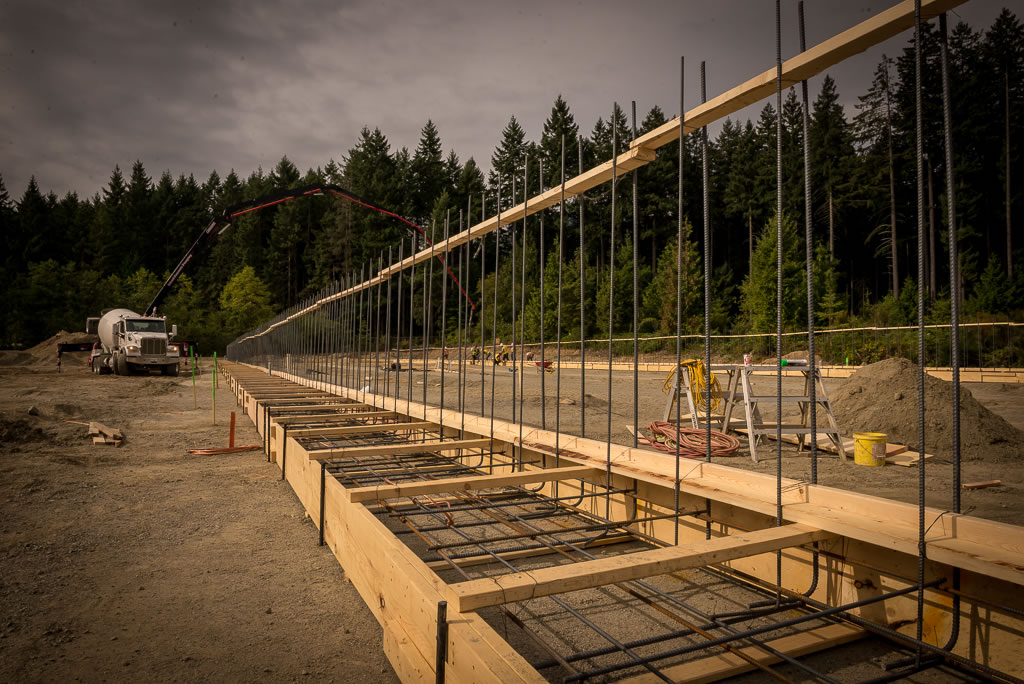
Investing in infrastructure to support future development in Selkirk
An infrastructure project underway in Selkirk, Manitoba, is enabling the City to explore new development opportunities. Funding provided by the Government of Canada, in partnership with the Province of Manitoba and the City of Selkirk, is helping extend the wastewater collection system to new parts of the City, making way for up to 1,800 new homes, as well as new commercial development.
What we heard
Canadians are concerned about the rising energy and maintenance costs that affect overall home affordability. Newcomers have difficulty breaking into the housing market, rental housing for transient labour is hard to find, and if local housing isn’t available, long commutes create barriers for rural Canadians to participate fully in the economy.
Housing challenges are not the same in every rural community. In Atlantic Canada we heard that short-term rental platforms are squeezing the rental market and making it challenging to attract seasonal workers and youth. In Western Canada, we heard that the lack of affordable and attainable housing is resulting in an increased migration of youth and seniors to urban centres so they can live in residential areas that are connected to affordable services.
We also heard that even for people who can afford a home, not only is the housing market limited, but there is also insufficient infrastructure to support new development and a lack of skilled tradespeople to build it.
What we’re doing
The Government of Canada has launched a first-ever National Housing Strategy, which is a $55-billion plan to improve housing affordability for Canadians. The National Housing Strategy aims to reduce housing needs for 530,000 families, create 125,000 new affordable housing units, repair and renew more than 300,000 affordable units, cut chronic homelessness by 50 percent, and ultimately change the face of housing in Canada.
The focus of the National Housing Strategy is to also address the housing security needs of Canadians, including rural Canadians, with an emphasis on the most vulnerable populations such as seniors, Indigenous Peoples, or women and children fleeing domestic violence.
The flagship National Housing Co-Investment Fund includes provisions promoting participation in smaller communities and flexibility to address the unique challenges faced by rural housing providers. The Fund covers a broad range of housing needs, from shelters to affordable homeownership. It prioritizes projects that support partnerships between governments, non-profits, private sector, and others to make federal investments go further.
Budget 2019 made further investments in housing, adding an additional $10 billion over nine years in financing for the Rental Construction Financing Initiative, which provides low-cost loans to encourage the construction of rental housing across Canada. Also announced was a new $1.25-billion First Time Home Buyer Incentive, which will help first-time home buyers no matter where they live.
As an immediate action, the $300-million Housing Supply Challenge announced in Budget 2019 will seek innovative ideas that will break down barriers to creating or renewing housing – ones that could address housing concerns raised by rural Canadians. The Housing Supply Challenge will invite municipalities and other stakeholder groups across Canada to propose new approaches to meet local needs, and provide the resources to develop new solutions to enhance housing supply and provide a platform to share these models with communities across Canada.
Attracting newcomers to rural communities
Canada relies on immigration for population growth and to help deliver essential services like health care. Economic immigration (people with specific occupational skills and experience that meets Canada’s labour needs) accounts for almost 60 percent of Canada’s immigration plan, which has a target of attracting 330,800 permanent residents in 2019. However, the majority of newcomers tend to settle in Canada’s largest cities, which means that rural communities benefit less from immigration.

Welcoming newcomers to Atlantic Canada
In the Miramichi region of New Brunswick, residents report that youth leaving their community is a major and recurring issue. The number of people under 20 has dropped from 14,000 to 9,000 since 2001, and the number of people aged 65 and older has grown from 7,500 to 11,000 over the same period. However, residents have reported success in attracting newcomers through the Atlantic Immigration Pilot Project. Through this program, the community attracted and retained 15 people in 2016, 85 in 2017, and 150 in 2018. For the first time in a generation, the population has stopped declining and has begun to stabilize as new Canadians make Miramichi their home.
What we heard
Rural Canadians told us that the average age of their populations is increasing, and youth out-migration is a significant issue. This has a demonstrable impact on job creation, skills retention, and essential services in rural areas.
Rural Canadians say it can be difficult to attract newcomers. Many communities point to poor Internet connectivity as a key factor that is not only keeping newcomers away, but also making it difficult for the newcomers who move to rural communities to remain over the long term. Limited access to services in rural communities can also create challenges in retaining newcomers in rural Canada.
What we’re doing
The Government of Canada, with provincial and territorial partners, is constantly innovating to encourage newcomers to settle across Canada. The Provincial Nominee Program has helped international workers and students obtain permanent residency if they meet a province’s specific labour needs. Although most of these newcomers have traditionally settled in major urban centres, the program has successfully increased the number of immigrants admitted to other regions from 1 in 10 in 1997, to 4 in 10 in 2017.
The Atlantic Immigration Pilot has built on the successes of the Provincial Nominee Program by providing another pathway to permanent residency. Rural Canadians told us that the Atlantic Immigration Pilot is a good example of partnership between governments, businesses, and community services that is focussed on retaining and integrating newcomers in the region.
The experience from these two initiatives shows that a combination of meaningful economic opportunity and strong community ties are essential for immigrants to establish community roots. The programs build on a partnership among employers, settlement organizations, and communities to create a more welcoming environment.
As an immediate action, the Government of Canada will launch the new Agri-Food Permanent Residence Pilot announced in Budget 2019 to support capacity in the agri-food sector, and continue to advance the implementation of the recently announced Rural and Northern Immigration Pilot to test strategies for retaining newcomers in smaller communities.
The Government will identify best practices through these pilot programs. It will use this information to refine future programs to help increase the number of newcomers who settle in rural Canada, and help address their key labour needs while strengthening local economies.
On June 14, 2019, the Government of Canada announced that 11 communities will participate in a Rural and Northern Immigration Pilot that will help smaller communities welcome newcomers who can help support middle-class jobs, fill labour shortages, and make these communities their forever homes.
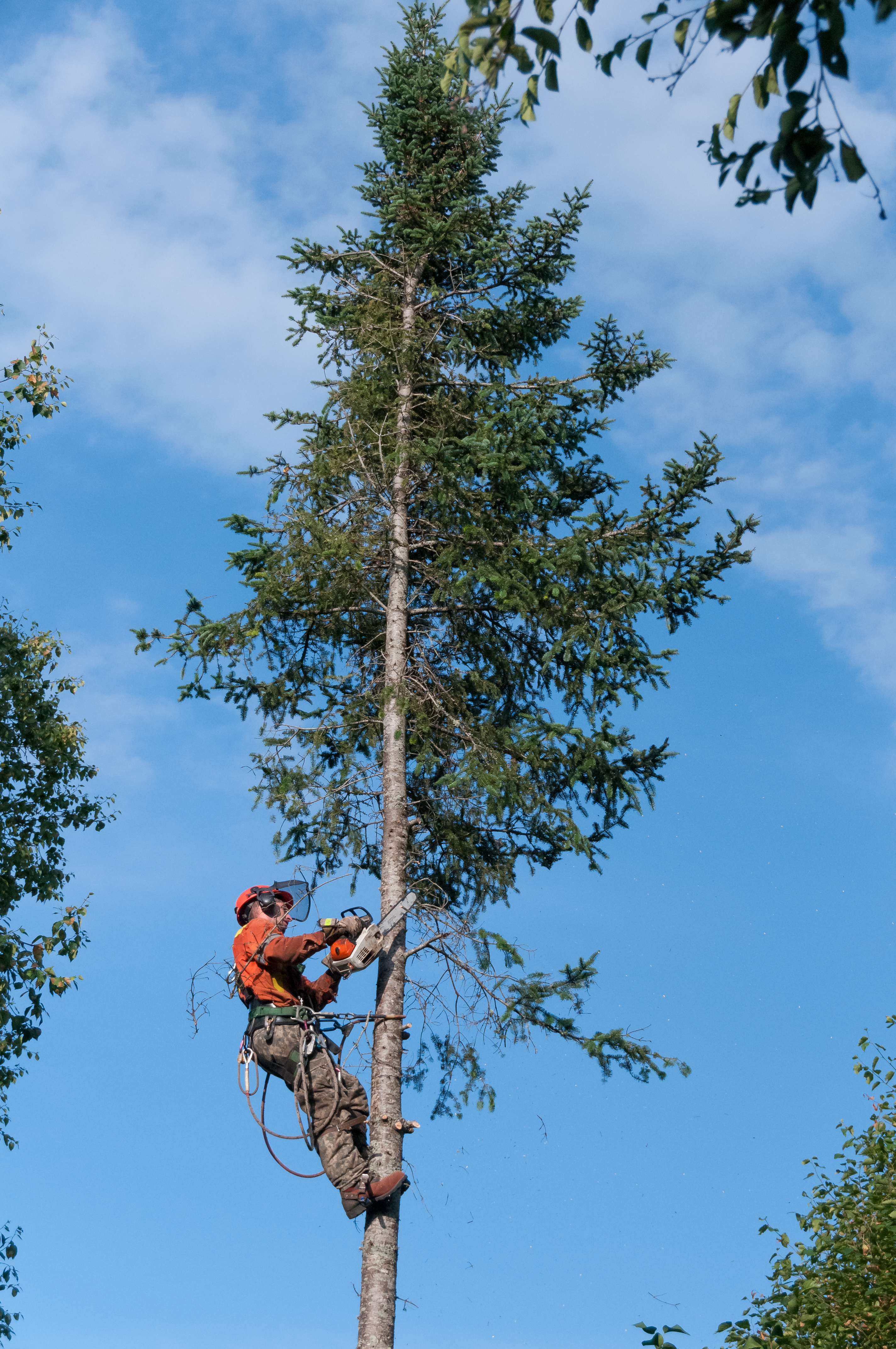
Rural and Northern Immigration Pilot: Welcoming newcomers to Canada
On June 14, 2019, the Government of Canada announced that 11 communities will participate in a Rural and Northern Immigration Pilot that will help smaller communities welcome newcomers who can help support middle-class jobs, fill labour shortages, and make these communities their forever homes.
As the Canadian population ages and the birth rate declines, rural Canada’s workforce has seen a significant decrease in available workers. Between 2001 and 2016, the number of potential workers has decreased by 23 percent, while the number of potential retirees has increased by 40 percent.
The Government of Canada is partnering with participating communities that are seeking to support their economic development through immigration, and provide supports to test their innovative, community-driven models for attracting and retaining newcomers. The selected communities are:
- Vernon and West Kootenay in British Columbia;
- Claresholm, Alberta;
- Moose Jaw, Saskatchewan;
- Brandon and Rhineland, Plum Coulee, Gretna, Altona (RPGA) in Manitoba; and
- North Bay, Thunder Bay, Sault Ste. Marie, Sudbury, and Timmins, Ontario.
The Rural and Northern Immigration Pilot builds on the successes of the Atlantic Immigration Pilot. It will be complemented by ongoing work with the territories to address the unique immigration needs in Canada’s North. Communities will identify a number of economic migrants on an annual basis, who, along with their families, will be eligible to apply for permanent residence.
Partnerships: Working together, better
No single order of government or group can solve the challenges facing rural Canada, which are long-term and complex. Many partners will need to be involved in finding and implementing solutions. This includes federal, provincial, territorial, and local governments, Indigenous organizations, the private sector, academia, and not-for-profit organizations.

In many cases, rural leaders have identified a vision for progress and are eager to work together to best use and leverage existing resources and take advantage of emerging opportunities.
What we heard
Rural Canadians told us that while they appreciate the investments being made in their communities, the federal government needs to better align its resources to rural needs. While individual programs and policies are effective in their specific scopes, the government must do a better job of ensuring its individual actions are not working at cross purposes, or failing to deliver optimal results due to a lack of coordination.
Rural Canadians want to be partners at the table during the design stage of federal programs so that their needs can be taken into account at the outset rather than once the program is already underway.
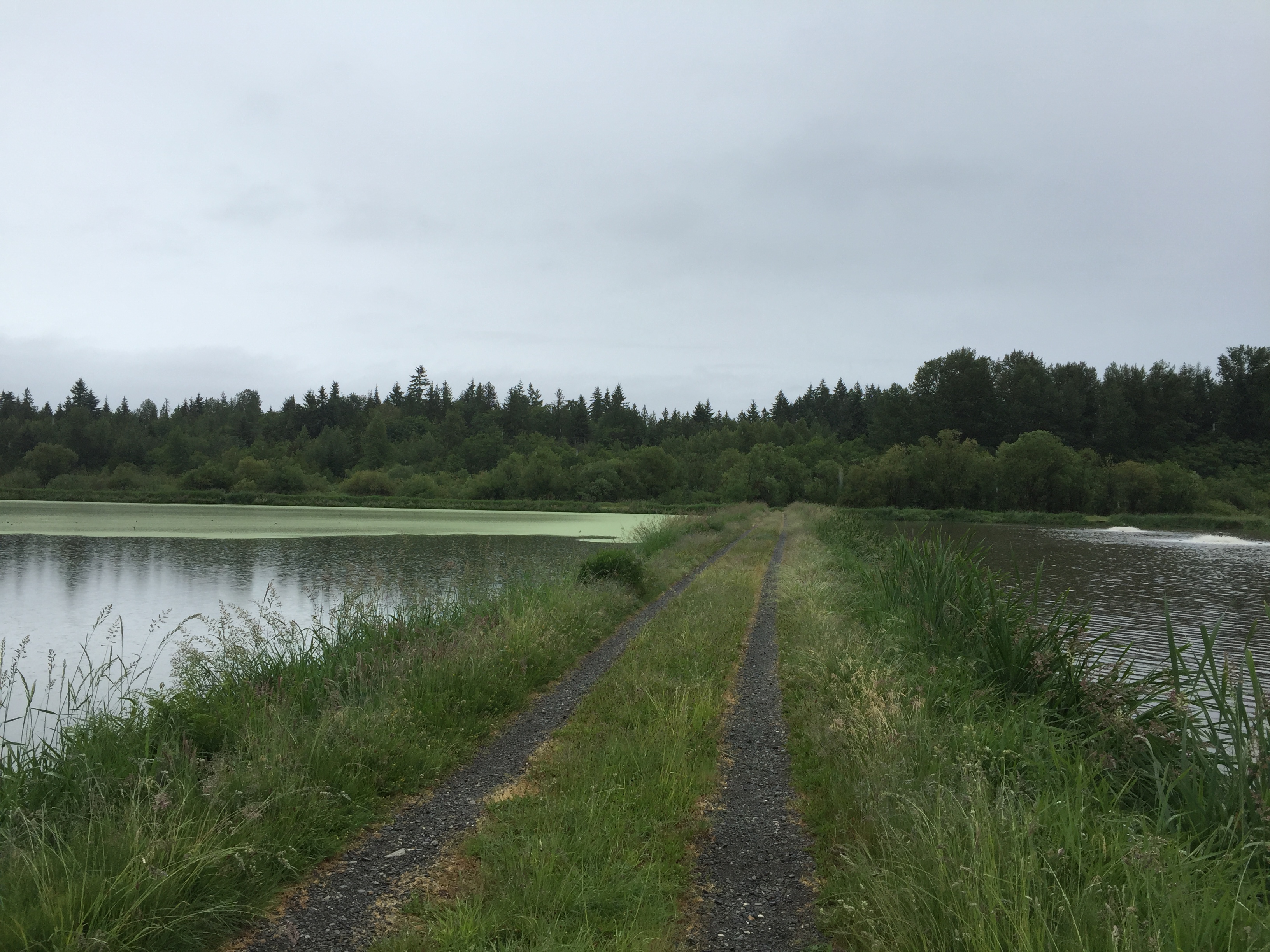
Funding supports clean healthy communities in British Columbia
The growing Village of Cumberland, B.C. is building a new wastewater lagoon system thanks to federal funding delivered by the Federation of Canadian Municipalities. The upgrades will allow Cumberland to meet current environmental standards for lagoon systems while also increasing its handling capacity. The new, more efficient system will reduce sewage releases during severe storms and remove more phosphorus, bio-chemicals, and suspended solids from released wastewater to reduce its environmental impact on the surrounding land and waterways.
What we’re doing
Canada’s regional development agencies are well-positioned to ensure that federal programs and policies are integrated on the ground and working together. These agencies, in collaboration with the Centre for Rural Economic Development, will look at better ways of accessing and delivering federal services and programs in rural communities, and help them plan and execute their investments where capacity is limited.

Broadly speaking, the jurisdiction, mandate, and expertise for many of the issues facing rural Canada rests with the provinces and territories, and their partnership will be key to ensuring rural vitality.
Ultimately, the government’s aim is to work in partnership with rural communities to position them for success. We recognize that rural Canada could benefit from greater assistance in connecting to the programs, initiatives, and policies that can provide the support and resources they need to be economically resilient, prosperous, and equal to their urban counterparts.
The Centre for Rural Economic Development, housed at Infrastructure Canada, will ensure a continued focus on rural issues and support the Minister of Rural Economic Development through:
- Working closely with the regional development agencies through strengthened interactions and information sharing, to improve access by rural communities to federal programs and services;
- Fostering collaboration across the federal government and engaging with provinces, territories, communities, municipalities, and Indigenous organizations on rural matters, including using existing and emerging coordination mechanisms;
- Providing a dedicated point of contact on rural issues within the federal government; and
- Strengthening rural perspectives in federal policies and programs.
The government will also continue to collaborate with provinces, territories, Indigenous groups, and municipal associations to strengthen the capacity of rural communities, including with the Federation of Canadian Municipalities to improve small communities’ capacity to develop, track, and maintain infrastructure assets through the Municipal Asset Management Program.
A roadmap to the future
The Government of Canada’s commitment to rural Canada extends beyond short-term actions: these are the building blocks for future progress. Achieving high-speed Internet connectivity goals are particularly important, as connectivity is an enabler for many aspects of rural economic development.

The government will continue to work with rural communities, Indigenous organizations, official language minority communities, municipalities, provinces, territories, and the private sector, to identify the best ways to meet their evolving needs.
In the medium term, the government will also examine existing federal programs and strategies, from skills and innovation to infrastructure development, to ensure they are impactful and relevant to modern rural communities.
The government will also tailor and strengthen its approach to rural economic development, improve its systems, and continue to support local capacity-building, planning and adaptation, while also supporting fair and expanded market access.
The Rural Economic Development Strategy is a roadmap to the future for strong and resilient rural communities. The Strategy reflects the voices of those living and working in rural Canada, as well as academia and research organizations, and recognizes their resiliency and creativity. It sets out a framework for supporting rural Canadians, building rural communities, and working together better. Rural Canada’s priorities will continue to evolve, reflecting their diversity and changing realities.
Rural communities are an integral part of Canada and this Strategy is the foundation for future success. Over the long-term, the Government of Canada’s focus on rural economic development will help unlock rural opportunities across our country and strengthen Canada’s economy. We will continue to work with rural communities to develop and invest in the solutions that make a real difference for all Canadians.
Complementary Government of Canada Strategies
National policies & strategies

High-Speed Access for All: Canada’s Connectivity Strategy (2019)
Sets target of achieving universal, high-speed Internet access and improved cellular coverage for all Canadians, and provides tools and better coordination to eliminate the digital divide.
Creating Middle Class Jobs: A Federal Tourism Growth Strategy (2019)
A new federal strategy, developed with Canadians, the tourism sector, and other orders of government, to harness the full economic potential of Canada’s growing tourism sector.
Canada Food Policy (2019)
A coordinated and collaborative approach to ensuring Canadians have access to healthy food, supporting food security in Northern and Indigenous Communities, reducing food waste, and ensuring Canada’s agriculture and agri-food sector continues to succeed at home and abroad.
Canadian Minerals and Metals Plan (2019)
Sets out pan-Canadian strategic directions for industry competitiveness and long-term success in the minerals and metals sector.
Social Innovation and Social Finance Strategy (2019)
Provides social purpose organizations with enhanced access to capital and supports for early stage innovation and growth to tackle persistent social, environmental and economic challenges. Includes the $755-million Social Finance Fund and $50-million Investment Readiness Program.
Trade Diversification Strategy (2019)
Enhances Canadian prosperity by achieving 50 percent more Canadian exports to overseas markets and securing more opportunities for Canadian exporters to compete and succeed in thriving and fast-growing global markets and sectors.
Poverty Reduction Strategy (2018)
Offers a bold vision for a Canada without poverty, and introduces Canada’s first official poverty line, as well as targets to reduce poverty by 20 percent by 2020, and 50 percent by 2030.
Reaching Home: Canada’s Homelessness Strategy (2018)
A community-based program aimed at preventing and reducing homelessness across Canada. This program provides funding to urban, Indigenous, rural, and remote communities to help them address their local homelessness needs.
National Housing Strategy (2017)
A 10-year, more than $55-billion plan that will build stronger communities and help Canadians access safe and affordable housing. The Strategy includes bold targets to reduce housing needs and chronic homelessness.
Pan-Canadian Framework on Clean Growth and Climate Change (2017)
Sets out a national plan for meeting Canada’s greenhouse gas emissions reduction target, building resilience to the impacts of climate change, and enabling clean growth and jobs through investments in technology, innovation, and infrastructure.
Federal Sustainable Development Strategy (2016)
Sets out Canada’s environmental sustainability priorities, goals, and targets, and outlines what federal, provincial, and territorial governments will do to promote clean growth, healthy ecosystems, and safe, secure and sustainable communities from 2016-19.
Investing in Canada plan (2016)
An over $180-billion plan to make historic new investments in infrastructure to support long-term economic growth, support a low-carbon, green economy, and build inclusive communities.
Canada’s Regional Development Agencies – A successful model for progress

Regional development agencies play a critical role in fostering economic growth in Canada’s rural regions. Guided by national priorities and strategies, they provide leadership for the implementation of regional innovation and growth strategies, and coordinate with departments, provinces and territories, Indigenous groups, industry organizations, and community partners.
Regional development agencies support regional innovation ecosystems and help business scale up by:
- Bringing rural and regional perspectives to policy development and decision-making based on regional intelligence;
- Delivering programs tailored to fit regional needs and circumstances;
- Providing access to financial assistance;
- Bringing together key players in their respective ecosystems;
- Supporting community economic development; and
- Ensuring that regional growth strategies eliminate regional gaps and align with Government of Canada objectives.
Through their on-the-ground presence in all regions across Canada and networks with businesses, industry organizations, communities, and municipal governments, regional development agencies have a solid expertise and long-standing experience in the delivery of regionally-tailored programs and services, and are positioned to respond to specific regional challenges in rural communities and implement initiatives that are adapted to the unique needs of rural Canada.
Canada’s regional growth strategies
Atlantic Growth Strategy (2016)
The Government of Canada and the four Atlantic Provinces are working together to stimulate the region’s economy, support both innovative and traditional industries, increase job opportunities for Atlantic Canadians, and focus on persistent and emerging regional challenges.
Federal Strategy on Innovation and Growth for the Quebec Regions (2018)
A collaborative economic development approach within the Government of Canada to support innovation and entrepreneurial drive in the Quebec regions.
Prosperity and Growth Strategy for Northern Ontario (2018)
Focussed on supporting innovation, growing companies, and building stronger communities, it highlights growth opportunities as well as efforts to diversify the core economies of Northern Ontario communities.
Pan-Territorial Growth Strategy (2019)
Seeks to help stimulate economic growth, which reflects the unique advantages of each territory.
Toward a Stronger Southern Ontario (2019)
Targets investments in Southern Ontario to best support the strengths, opportunities and needs of communities now, and maximize the region’s economic growth potential. In February 2019, the Federal Economic Development Agency for Southern Ontario established a rural allocation of $100 million (over 3 years) to spur innovation and economic growth in the region.
Western Canada Growth Strategy (2019)
A call to action for ambitious partnerships and actions to grow the western economy, through strengthening diversification, trade, skills, and communities.

Centre for Rural Economic Development
Email: rural@ised-isde.gc.ca
Website: Canada.ca/rural
Canada’s Regional Development Agencies
Atlantic Canada Opportunities Agency
Telephone: 1-800-561-7862 (TTY: 1-877-456-6500)
Email: information@acoa-apeca.gc.ca
Website: acoa-apeca.gc.ca
Canada Economic Development for Quebec Regions
Telephone: 514-283-6412 / 1-866-385-6412 (TTY: 1-844-805-8727)
Email: dec.serviceweb-webservice.ced@canada.ca
Website: dec-ced.gc.ca
Canadian Northern Economic Development Agency
Telephone: 1-855-897-2667 (TTY: 1-800-926-9105)
Email: CanNor.InfoNorth.InfoNord.CanNor@canada.ca
Website: cannor.gc.ca
FedDev Ontario
Telephone: 1-866-593-5505 (TTY: 1-800-926-9105)
Email: fdo.feddevontario.fdo@canada.ca
Website: feddevontario.gc.ca
FedNor (Northern Ontario)
Telephone: 1-877-333-6673 (TTY: 1-866-694-8389)
Email: ic.fednorcomments-commentairesfednor.ic@canada.ca
Website: fednor.gc.ca
Prairies Economic Development Canada (PrairiesCan)
Telephone: 780-495-4164 / 1-888-338-9378 (TTY: 1-877-303-3388)
Email: WD.contactus-contactez-nous.DEO@prairiescan.gc.ca
Website: prairiescan.gc.ca
Pacific Economic Development Canada (PacifiCan)
Telephone: 604-666-6256 / 1-888-338-9378 (TTY: 1-877-303-3388)
Email: info@pacifican.gc.ca
Website: pacifican.gc.ca

